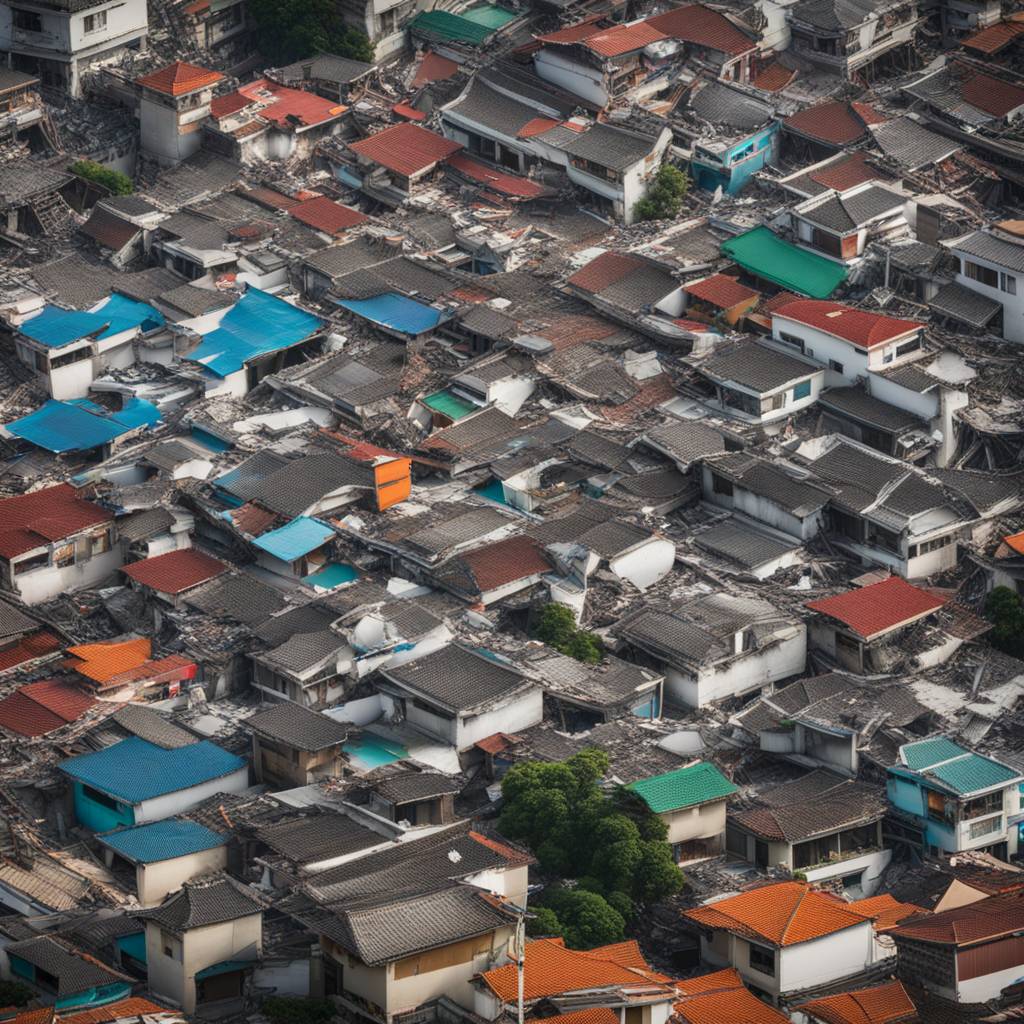Taiwan experienced a massive earthquake, with a magnitude of 7.4, causing significant damage and destruction in Hualien County. The quake resulted in the deaths of nine individuals and injuries to over 1,000 people. The aftershocks that followed the initial quake were continuous and alarming, shaking residents in the area. With a total of 201 aftershocks reported, many of which were over magnitude 5, the situation remained tense as authorities warned of potential landslides and continued seismic activity. The heavy damage in Hualien County, specifically in the city of Hualien, led to evacuations and rescue efforts focused on collapsing buildings, such as the Uranus Building.
Residents in Hualien were caught off guard by the earthquake, which hit during the morning commute, as many were getting ready for work or school. The continuous aftershocks caused panic among the population, with people fleeing to the streets for safety. Many buildings sustained damage, and roads were blocked off due to fallen walls and debris. The chaos and fear following the earthquake led to a sense of urgency and a need for immediate rescue efforts and evacuation procedures, as well as an assessment of structural damage.
In response to the earthquake, authorities in Taiwan opened evacuation areas for people to seek shelter, such as high school gymnasiums and athletic fields. Rescue teams worked tirelessly to free people trapped in buildings, while also helping out those injured in the quake. The impact of the earthquake extended beyond Hualien, with the west coast of the island also experiencing significant damage, including the toppling of a building in Changhua County. Rail services were halted, and roads were inspected for damage, disrupting transportation across the region.
The earthquake struck during a time when many people in Taiwan were preparing to travel for Tomb Sweeping Day, a holiday to honor deceased relatives. This disrupted travel plans and added to the chaos caused by the earthquake. Major industries, such as TSMC, were briefly affected by the earthquake, causing a temporary shutdown in operations. However, the assessment of the impact on production and any potential damages was ongoing. Taiwan’s earthquake preparedness systems, which have evolved over decades in response to past disasters, were put to the test once again, showcasing the island’s resilience and ability to respond to such events.
The pattern of aftershocks following the earthquake was expected to continue for the next few days, with authorities advising residents to be cautious, especially during the Ching Ming holiday weekend. The earthquake highlighted the vulnerability of Taiwan to seismic activity, given its location at the intersection of tectonic plates. Despite the challenges posed by the earthquake, Taiwan has made significant strides in earthquake preparedness and response measures over the years, learning from past disasters and implementing safety protocols and building codes to mitigate the impact of earthquakes. The aftermath of the earthquake in Taiwan serves as a reminder of the importance of being prepared for such natural disasters and the need for a coordinated response to ensure the safety and well-being of the population.















